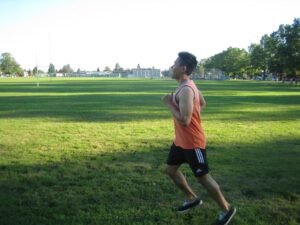The blood pressure is described as the force of blood on the arterial walls. If the blood pressure reading is too high, it is called as hypertension which is considered as a risk factor for various health issues such as stroke and heart diseases. When it comes to prehypertension, it is a term used to described blood pressure that is higher than normal but not high enough to be categorized as hypertension.
Prehypertension has a blood pressure reading of 120/80 mmHg to 139/89 mmHg. An individual with pre-hypertension simply means that he/she is likely to develop hypertension in the future. On the other hand, there are various ways in order to control pre-hypertension as well as reduce the blood pressure.
Minimize sodium intake
It is vital to reduce the intake of sodium in the diet. Sodium is often found in processed or packaged foods, fast foods and even table salt. In a study conducted, it was discovered that reducing the intake of sodium can reduce the blood pressure reading. The best results are among those who consume less than 1,500 mg in a day.

Vegetables and fruits
The individual should stick with a diet comprised of vegetables and fruits. With the DASH eating plan, it recommends consuming 4-5 servings of vegetables and 4-5 servings of fruits in a day. A single serving is equivalent to ½ cup of chopped vegetables or fruits either cooked or raw or a single medium-sized piece of fruit.
Non-fat or low-fat dairy foods
If possible, the individual should opt for non-fat or low-fat dairy foods if he/she is not lactose intolerant. A doctor should be consulted for possible alternatives based on the health status of the individual if he/she cannot tolerate dairy products. The DASH eating plan usually recommends 2-3 servings of non-fat or low-dairy products. Remember that a single serving is equivalent to a cup of yogurt or milk.
Diet low in saturated fat, total fat and cholesterol
The individual should stick with a diet that contains reduced amounts of foods containing total fat, saturated fat and cholesterol. It is important to note that saturated fat and cholesterol are derived from animal products such as beef and also packaged baked products.
It is vital to reduce the intake of these foods which can minimize total fat, saturated fat and cholesterol in the diet. In the DASH diet, it recommends not more than 27% of calories from total fat and not more than 6% of calories from saturated fat. Additionally, the intake of cholesterol should not exceed more than 150 mg in a day.
Being physically active
Staying physically active is also a must. In most cases, 30 minutes is enough in most days of week. Engaging in physical activity helps prevent and regulate high blood pressure. The individual can select from moderately intense activities such as biking, walking, cleaning and gardening.
Cut down weight
Try to lose weight if currently overweight or obese. The blood pressure increases as the weight increases. Being overweight can also put the individual at risk for develop high blood pressure. Cutting down on a large amount of weight is not necessary to see any improvements in the blood pressure. Losing even 10 lbs. can help lower the reading.
Reduced alcohol intake
Reduce the intake of alcohol to 2 drinks in a day for males and 1 drink a day for females. Excess intake is linked with the development of prehypertension.
